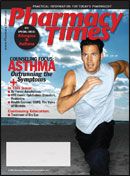Publication
Article
Pharmacy Times
From the Publisher: Economic Impact on Pharmacy Patients
Author(s):

Until recently, most evidence indicates that the economic downturn has had relatively little impact on pharmacies. Although consumers throughout the country have cut back budgets and curbed spending on big-ticket items, sales at drugstores and pharmacies grew by 7.4% in 2008, totaling over $19 billion, according to the US Census Bureau.
Prescription medications, of course, make up only a portion of overall drugstore sales. Yet data released by IMS Health in March revealed that prescription sales growth increased 1.3% in 2008 to $291 billion—smaller growth than in past years, but growth nonetheless. Across the major therapy classes, lipid regulators were the most widely dispensed retail prescription medications on a volume basis in 2008, followed by codeine and combinations, antidepressants, ACE inhibitors, and beta-blockers. In terms of overall prescription sales through both retail and nonretail channels, antipsychotics led all therapy classes, followed by lipid regulators, proton pump inhibitors, and seizure disorder medications.
Overall pharmacy sales bucked the general retail trend, which saw sales decrease by as much as 5.1% in the fourth quarter of 2008. It's tough to tell exactly how to attribute the growth in pharmacy sales despite losses in many other sectors of the economy. We can hope that consumers recognize the importance of their medication therapy and aren't cutting back on their needed medications, but recent evidence suggests otherwise.
Walgreens' Chief Executive Gregory Wasson said in a March conference call with analysts that, "Consumer behavior has changed dramatically in recent months, beyond just the kinds of products they are purchasing." Wasson went on to say that rising unemployment and other economic problems are causing Americans to visit the doctor less often, resulting in fewer prescriptions being written and filled in the United States. Walgreens says that patients seem to be delaying filling prescriptions or are cutting pills in half to save money.
Look again at the conditions for which the most prescriptions are filled: lipid regulators, pain medication, antidepressants, ACE inhibitors, and beta-blockers. Patients taking these medications must be made aware of the importance of medication compliance. As a pharmacist, one of the more difficult challenges you face is finding the time to interact with patients one-on-one. Doing so during a troubled economic time is more important than ever. As the most accessible health care professional, you have an opportunity to counsel patients on the importance of adhering closely to the therapy schedule outlined by the patient's primary health care provider.
Pharmacy Times will continue to cover this issue and look for practical tips to help you provide the best patient care. This issue provides some ideas about improving patients' literacy with health care information, along with the latest information on prescription and OTC treatments for allergy and asthma, our editorial focus this month.
Enjoy the issue, and let us know how we can serve you better.
Thank you for reading.
Michael J. Hennessy







